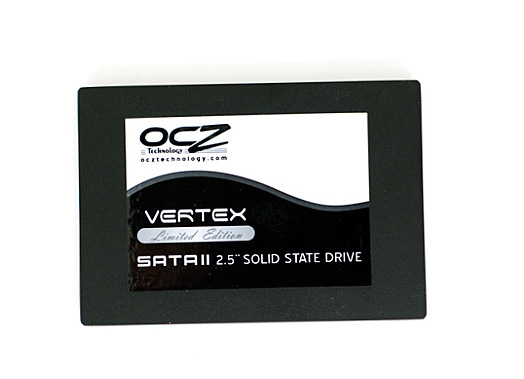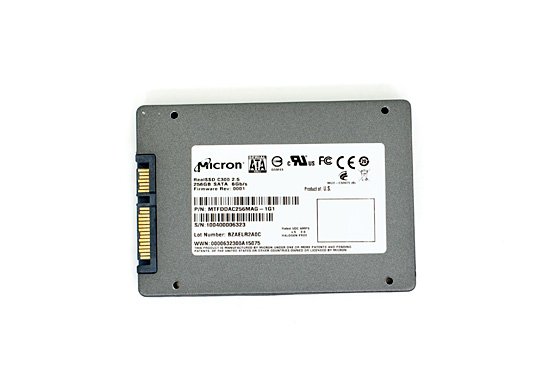OCZ’s Vertex Limited Edition Review & SSD State of the Union
by Anand Lal Shimpi on February 19, 2010 12:00 AM EST- Posted in
- Storage
Final Words
If you were one of the first customers to buy an X25-M G1 or G2, these new drives are fast but not fast enough to make you want to ditch your drive. At the same time, if you’re looking to make the jump to what I’ve often referred to as the single best upgrade you can purchase for your PC, these new drives don’t do anything to lower prices. At $399 the 100GB Vertex LE is no better of a deal than the existing Indilinx offerings. The $499 Crucla RealSSD C300 takes price in the wrong direction as well. If you were waiting for SSDs to get cheaper, you’ll have to wait even longer for the transition to 25nm MLC NAND flash in Q4.
That being said, there is value to be gained from today’s announcement. At $399 you are getting more SSD for your money than you will be able to get when the SF-1200 based Vertex 2 drives ship later this year. The only unknown is how much performance you’ll give up by going to a cheaper SF-1200 drive. I've heard that the maximum read/write speed of the SF-1200 will be similar to the SF-1500, but random performance is unknown at this time. Ultimately how much worse the SF-1200 performs will dictate how valuable the Vertex Limited Edition actually is.

Make no mistake - the Vertex Limited Edition is fast. Easily faster than the SSD posterchild Intel’s X25-M, across the board. It’s only in our heavy multitasking/downloading workload that the SandForce’s controller shows its soft spot. When tasked with a great deal of compressed writes, the SF-1500 controller performs no better than last year’s Indilinx Barefoot. At least with the Vertex LE you’re not paying a price premium for it.
The Vertex LE boasts sequential performance that easily hits the limits of 3Gbps SATA. Doing so with reads isn’t that hard, but with writes it’s harder to do. Granted anything you’re writing that’s large enough to transfer at speeds of 250MB/s for more than a couple of seconds is likely highly compressed to begin with and thus you won’t see those transfer speeds to begin with. Such is the great paradox of SandForce’s DuraWrite technology.
Unlike most drives that only offer good sequential performance, the Vertex LE doesn’t use it as a crutch. Random read and write performance is spectacular, regardless of OS or partition alignment. Under Windows 7, the Vertex LE can randomly write data in 4KB at 162.2MB/s. That’s faster than Intel’s X25-M G2 can write sequentially.
Then we have Crucial’s RealSSD C300, which you are paying a price premium for. Starting at $499 the C300 commands a higher price than any other SSD on the market with 128GB of MLC NAND flash. As a result you get the only 6Gbps compatible SSD on the market, and the performance to back it up.

At first glance it is the most Intel-like of any of the SSDs here. Its performance comes without any stipulations as to the type of writes you have to be doing, it just always delivers.
Sequential and random performance is stellar, although out of the box it doesn’t deliver the best performance under Windows XP. Pair it with a more modern OS that is 4K-aware and its performance easily rivals the SF-1500. Give it access to a 6Gbps SATA controller and it’ll deliver higher sequential read speeds than we’ve ever seen from an SSD.
The RealSSD C300’s random write performance under Windows 7 is slightly behind the Vertex LE, but its random read performance is much better.
Real world performance of the C300 is nothing to scoff at. It’s easily in the top 3 of all SSDs we’ve ever tested, and arguably the fastest MLC SSD on the market. Especially if you pair it with a 6Gbps SATA controller. The only thing that worries me about the C300 is its unusually high max write latency. Admittedly it pokes its head up very rarely and average write latency is second only to the Vertex LE, but OSes don’t always respond well to unexpectedly high write latencies. It’ll be something to keep an eye on as I get more time with the C300.
Our final newcomer is the Kingston SSDNow V+ Series drive. Priced at $399 it continues the trend of not driving prices lower, just offering alternatives. The 128GB drive I tested performed extremely well in some cases such as our heavy multitasking/downloading Bench workload. In others, the drive was much less impressive. The Toshiba controller doesn’t do well in random write performance, mimicking the Samsung RBB controller it often competes with in OEM machines. The fact that I wasn’t able to get TRIM working is also cause for concern. If Kingston could drop the price on the drive and get the TRIM support working it might be an interesting alternative to Samsung based drives.
Now we get to the hard part, recommendation time.
There’s this convergence of SSDs with 128GB of NAND at the $399 price point. Generally at or around $399 you can get something with 128GB of NAND. Controller offerings at this price point are Indilinx, Intel, Samsung and now SandForce.
Assuming the drive is totally reliable, and there’s no chance of any bugs creeping up that OCZ/SandForce missed, the Vertex LE would be the absolute best buy at $399. You’ll notice that my recommendation comes with a huge caveat. The last SF-1500 drive I had died after two weeks. Admittedly it was a beta, but this is also SandForce’s first drive shipping to consumers ever. I think it’s more than fair to be cautious.
If you’re willing to take the risk, the Vertex LE appears to be the best SSD you can buy at $399. It is a difficult proposition simply because we have had such limited experience with the drive and the controller/firmware have a completely unproven track record. It really boils down to how much of an early adopter you are. At least OCZ as a company tends to take care of its customers, so even if you do take the jump and something does go wrong you won’t be SOL. The Vertex LE will ship with a 3 year warranty and if your drive dies you'll get another LE (OCZ is putting some aside), Vertex 2 or other equivalent in its place.
OCZ’s CEO Ryan Petersen and I could always get into another yelling match if you aren’t taken care of.

If you're not willing to risk it, Intel or Indilinx are your best bets. Intel for best random performance, or Indilinx for better sequential write speed and cost.
Go up another $100 and the recommendation is easily the Crucial RealSSD C300. Again, assuming that nothing horrible ever happens with the drive. I do have more faith in Crucial’s validation testing given that Micron is shipping the same drive to OEMs, but it’s still a brand new, unproven platform. It is good to see Crucial/Micron actually embracing new technology instead of shying away from it. The combination of ONFI 2.0 NAND and 6Gbps SATA give the C300 an advantage that no other drive can match.
It's the price point that I'm really not comfortable with. When Intel launched the X25-M at nearly $600, it was fine because no other drive came close. With real world performance of the C300 virtually indistinguishable from the competition, it's difficult to justify that extra $100. Granted in more I/O bound cases, the C300 does have some extra value - I just question whether or not that's worth an extra $100.
While performance is surely improving, price is not. We'll have to wait until Q4 for that. The fact that Intel's roadmaps show the X25-E using 34nm MLC NAND means things are going to get very interesting for enterprise SSDs in 2011.










83 Comments
View All Comments
allessd - Saturday, February 20, 2010 - link
maybe this site is of interest to you:"SSD Decoder Ring - an SSD comparison guide"
www.pcper.com/article.php?aid=736
Jupie - Saturday, February 20, 2010 - link
Great article - always nice to hear about SSDs as I clearly see them as the future for a boot drive at least.What I'm curious about is the performance of drives of the same series with different capacities. I'm not willing to spend ~800 USD on a drive but rather ~400 USD. How much performance hit does a Real SSD C300 really take? Manufactors clearly seem to prefer to send their biggest drives with the highest performance to test but what about the performance of the reasonalbe priced ~100 GB versions?
Would be great to read about that as well ;o)
Otherwise keep up the good articles!
MadMan007 - Saturday, February 20, 2010 - link
Yeah this is an important point, it applies to regular HDs to a much lesser extent too. I would like to see tests on smaller capacity drives of a given series. I guess a lot depends on implentation, for example using the same number of flash chips with a given controller just of a lower capacity per chip versus using fewer flash chips and channels.Conscript - Friday, February 19, 2010 - link
Not sure why I'd pay the premium for "limited" SF-1500 drives when I can just get the same thing here, for less...http://eshop.macsales.com/shop/internal_storage/Me...">http://eshop.macsales.com/shop/internal_storage/Me...
Anand, any chance you think they'd give you one for review? Thinking about putting one of these in my new MBP (when they come out). Unless the new MBP has SATA 3, in which case I might look hard at the C300.
iwodo - Friday, February 19, 2010 - link
May be Anand can do an article on that. You mention previously that controller contribute VERY little to the total cost of SSD. NAND being the major part.If that is the case, then assuming we always need 8 chips for an SSD. SSD Prices wont ever dropped below $100? Because while capacity per unit will grow, it seems minimum unit prices dont fall that much.
icrf - Saturday, February 20, 2010 - link
Yeah, I'd love to see a reliable, slow 8-16 GB drive for $50. I've got a RAID server that can't seem to keep up boot drives and would love something like that.Bolas - Friday, February 19, 2010 - link
So if I'm willing to spend up to $1200 for a boot drive, what's the best option? Crucial? Vertex LE? Intel? OCZ Z-Drive? Something else?czesiu - Friday, February 19, 2010 - link
Any chances for a Kingston SNV425 review?mckirkus - Friday, February 19, 2010 - link
I would like to see what pure RAM drive based storage would do so we can get a sense of how close these drives are getting to some sort of maximum.I'm not sure if you can do this with a RAMDisk you create with software or if and entire image would need to run in RAM (HDTach, etc., will not work on RAM drives for some reason. Just to be clear, I'm not referring to benchmarks of RAM using a SATA interface.
Good stuff yet again Anand.
mindless1 - Friday, February 19, 2010 - link
There is no "sort of maximum", DRAM keeps getting faster.However, if you were to create and use a RAMDISK, however you ended up doing so, it would destroy any flash drive in terms of performance on every possible parameter. The question is not about performance at all, rather the implementation and volatile nature of using it... and of course that it's no small feat to end up with hundreds of GB worth of those chips for typical HDD replacement purposes (in a reasonably sized form factor).